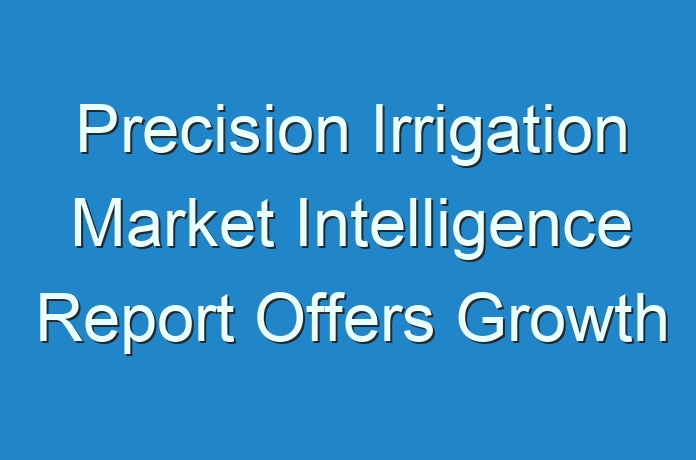
Precision irrigation is defined as the application of a precise amount of water at the correct time and appropriate locations in an agricultural field. It is a part of precision agriculture which also includes variable-rate nutrients, seeding, and pesticide application. Currently, around 80% of cultivated land is not irrigated at all and relies on only rainwater. The remaining 20% uses three methods of irrigation: flood (surface), micro (drip), and mechanized irrigation. Globally, flood irrigation is a widely used method. However, it is an inefficient technique as it leads to the entire field getting watered, including immense areas of the field where no crops are being grown. As the fertilizer is delivered to the field through water, a large amount of fertilizer is also wasted. Moreover, different regions within the field require different amounts of water depending on the soil porosity. Potential for conservation arises from not irrigating parts of land without crops and through the efficient utilization of water. Though the economic value of using precision irrigation has not been justified yet, the growing need for water conservation is likely to increase its desirability.
Request Brochure:
https://www.transparencymarketresearch.com/sample/sample.php?flag=B&rep_id=19400
Precision irrigation is projected to save approximately 10–15% of water used in traditional irrigation. Other benefits include increased harvestable area, decreased incidence of diseases, and leaching. The shift to commercial machines for use in precision irrigation is uncomplicated and can be accomplished easily. Soil moisture and crop water requirement are relevant factors for these systems and can be monitored in different ways. However, precision irrigation is faced with a number of drawbacks which prohibit its widespread use in agriculture. Its usage is not economical at the current grain price to water cost ratio, the addition of fertilizers or animal waste to irrigation water needs to be heavily regulated, and the rate of infiltration of water into the soil and the water storage capacity of soil vary spatially. If any or both of these attributes are lower in one location than in the bulk of the field, it results in surface runoff despite the machine being correctly designed for a major portion of the field. Runoff collecting within the irrigated area can create a pond, causing aeration damage to the crop.
Enquiry Before Buying:
https://www.transparencymarketresearch.com/sample/sample.php?flag=EB&rep_id=19400
Increasing attention to conservation of water in places facing a scarcity of water, technical developments such as GPS monitoring systems, growing environmental awareness, regulatory constraints on water use, and governmental incentives are likely to increase the use of precision irrigation in agriculture. The adoption of this technology is more widespread in the development sector as growers have access to capital. The considerable size of the fields also justify the use of precision irrigation. The U.S., Canada, and Australia are at the forefront of implementing precision irrigation as a means for increasing crop yield, as the extent of mechanization in agriculture is already significant in these countries. In Europe, the U.K. was the first to utilize precision irrigation, with Germany and France also rapidly adopting this technology. There exists a huge potential for precision irrigation in the GCC, which invests heavily in innovative solutions to overcome the problem of scarcity of water to boost crop production. The technology is currently not economically viable in most parts of Asia Pacific and Africa and is therefore restricted to niche agricultural research institutes in these regions. Japan, South Korea, Taiwan, and some parts of China are attractive markets for precision irrigation.
Request Discount:
https://www.transparencymarketresearch.com/sample/sample.php?flag=D&rep_id=19400
Key players in this market are Valmont Industries, Inc, Hortau, Precision Irrigation Services (Aust) Pty Ltd, Hunter Industries, Netafim, Precision Lawn Irrigation, Inc., Trimble Inc., Aquaspy, and CropMetrics.
This study by TMR is all-encompassing framework of the dynamics of the market. It mainly comprises critical assessment of consumers’ or customers’ journeys, current and emerging avenues, and strategic framework to enable CXOs take effective decisions.
Our key underpinning is the 4-Quadrant Framework EIRS that offers detailed visualization of four elements:
- Customer Experience Maps
- Insights and Tools based on data-driven research
- Actionable Results to meet all the business priorities
- Strategic Frameworks to boost the growth journey
The study strives to evaluate the current and future growth prospects, untapped avenues, factors shaping their revenue potential, and demand and consumption patterns in the global market by breaking it into region-wise assessment.





